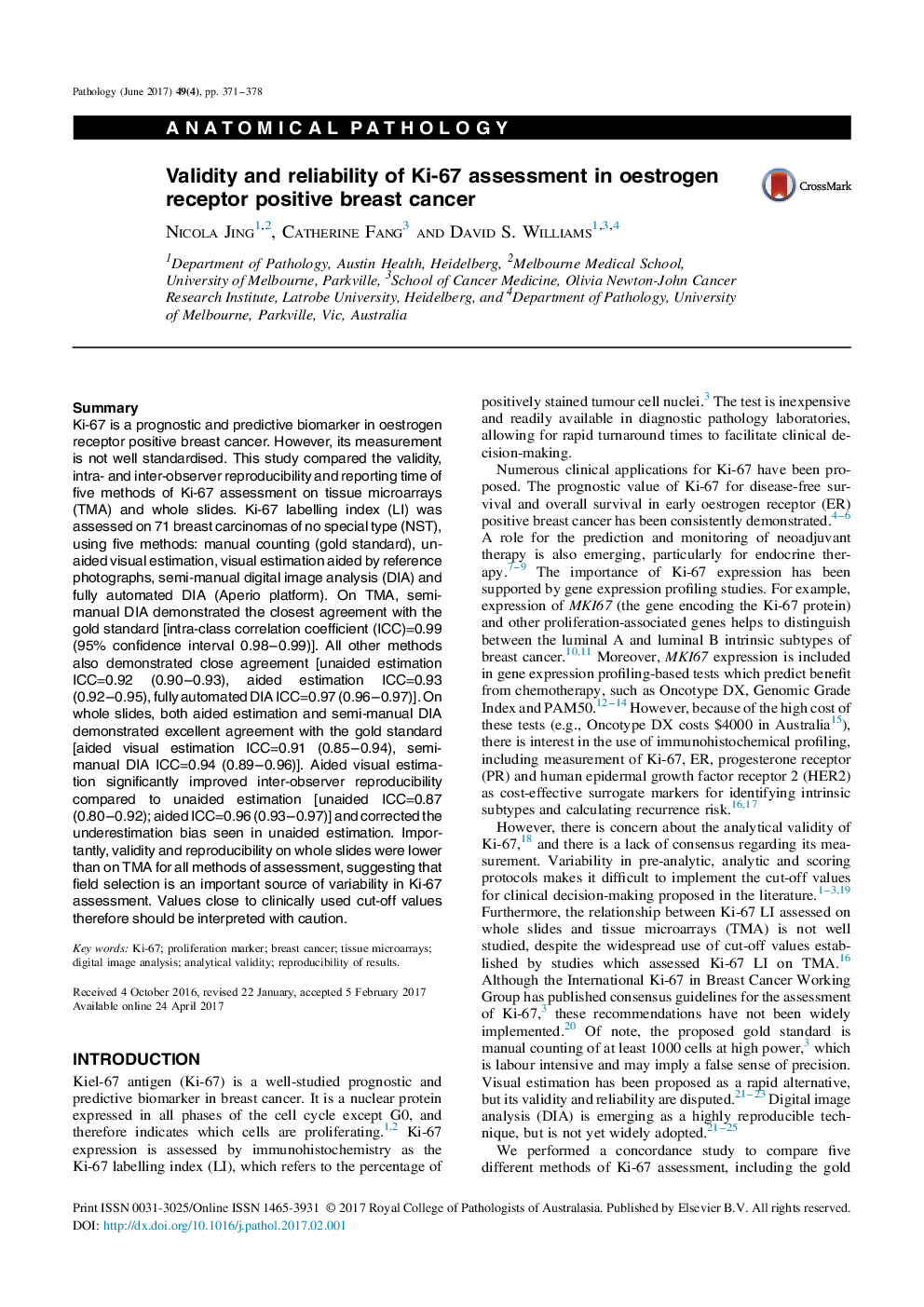| Article ID | Journal | Published Year | Pages | File Type |
|---|---|---|---|---|
| 6463203 | Pathology | 2017 | 8 Pages |
SummaryKi-67 is a prognostic and predictive biomarker in oestrogen receptor positive breast cancer. However, its measurement is not well standardised. This study compared the validity, intra- and inter-observer reproducibility and reporting time of five methods of Ki-67 assessment on tissue microarrays (TMA) and whole slides. Ki-67 labelling index (LI) was assessed on 71 breast carcinomas of no special type (NST), using five methods: manual counting (gold standard), unaided visual estimation, visual estimation aided by reference photographs, semi-manual digital image analysis (DIA) and fully automated DIA (Aperio platform). On TMA, semi-manual DIA demonstrated the closest agreement with the gold standard [intra-class correlation coefficient (ICC)=0.99 (95% confidence interval 0.98-0.99)]. All other methods also demonstrated close agreement [unaided estimation ICC=0.92 (0.90-0.93), aided estimation ICC=0.93 (0.92-0.95), fully automated DIA ICC=0.97 (0.96-0.97)]. On whole slides, both aided estimation and semi-manual DIA demonstrated excellent agreement with the gold standard [aided visual estimation ICC=0.91 (0.85-0.94), semi-manual DIA ICC=0.94 (0.89-0.96)]. Aided visual estimation significantly improved inter-observer reproducibility compared to unaided estimation [unaided ICC=0.87 (0.80-0.92); aided ICC=0.96 (0.93-0.97)] and corrected the underestimation bias seen in unaided estimation. Importantly, validity and reproducibility on whole slides were lower than on TMA for all methods of assessment, suggesting that field selection is an important source of variability in Ki-67 assessment. Values close to clinically used cut-off values therefore should be interpreted with caution.
